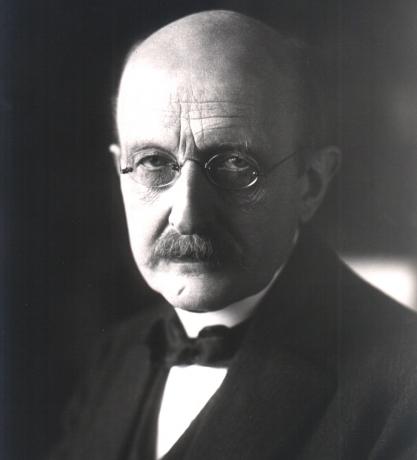We know that the Brazil's economic cycles they consisted of periods in which economic activities varied.
Brazil was a country that emerged from the exploitation of natural resources. Thus, the national territory experienced several phases in which such resources were systematically exploited and converted into profits for the Portuguese crown.
In this sense, answer the exercises on Brazil's economic cycles that we have specially selected for you!
Exercises on Brazil's economic cycles
1 — What was the first economic cycle in Brazil?
a) Rubber cycle.
b) Sugarcane cycle.
c) Brazil wood cycle.
d) Gold cycle.
2 — The ______________ was the second economic cycle experienced by the country in the colonial period. As it is a highly valued product on the European market, it yielded a lot of profit to the Portuguese Crown.
a) sugarcane cycle
b) Brazilwood cycle
c) gold cycle
d) rubber cycle
3 - The period marked by the sugarcane cycle was marked by:
a) intense persecution of English pirates who were on the high seas watching the Portuguese vessels to steal them.
b) immigration of European peoples fleeing from religious persecution in Europe.
c) enslavement of indigenous peoples.
d) enslavement of the African people and the slave trade.
4 — Check the alternative that contains the main characteristics of the sugarcane cycle.
a) Monoculture, use of slave labor, prioritization of the foreign market and large estates.
b) Polyculture, use of slave labor, prioritization of the foreign market and large estates.
c) Monoculture, use of indigenous slave labor, prioritization of the foreign market and large estates.
d) Monoculture, use of slave labor, prioritization of the foreign market and smallholdings.
5 - The gold cycle experienced its peak in the 18th century, when exploring the gold deposits of the following states:
a) Minas Gerais, São Paulo and Mato Grosso.
b) Minas Gerais, Goiás and Pernambuco.
c) São Paulo, Goiás and Pernambuco.
d) Minas Gerais, Goiás and Mato Grosso.
- Free Online Inclusive Education Course
- Free Online Toy Library and Learning Course
- Free Online Math Games Course in Early Childhood Education
- Free Online Pedagogical Cultural Workshops Course
6 — (UFRJ) To guarantee land tenure, Portugal decided to colonize Brazil. But for that, it would be necessary to develop a profitable economic activity. The solution found was to implement in certain stretches of the coast:
a) sugar production.
b) the exploration of gold.
c) the extraction of pau-brasil.
d) cattle raising.
e) the spice trade.
7 — Is it correct to say that the gold cycle represented the enrichment of Brazil, in addition to contributing to creating the bases that guaranteed the country's independence?
Ah yes. The gold cycle represented the pinnacle of the colonial economy. For this reason, the country lived a period called the “Golden Era”, characterized as a moment marked by investments in the arts and education.
b) No. The gold cycle marked the peak of the colonial economy, however, all the wealth acquired in Brazilian territory was directed to the European continent.
c) Yes. The enrichment experienced by Brazil during the gold cycle was the main basis that contributed to the country's independence.
d) No. The gold cycle marked the period in which the colonial economy was less prominent due to successive thefts that occurred in the mines, which prevented the wealth from being directed to investment national.
8 — After the depletion of the gold mines, what was the economic cycle that prevailed in the country?
a) Sugarcane cycle.
b) Brazil wood cycle.
c) Cotton cycle.
d) Rubber cycle.
9 — The pau-brasil cycle was characterized by:
a) slave trade, an activity that generated a lot of profit for landlords.
b) barter, that is, in exchange for indigenous labor, the Portuguese gave them European objects.
c) investment in textile industries in the country, considering that pau-brasil expelled a liquid that dyed the fabrics.
d) barter, that is, in exchange for African labor, the Portuguese gave them European objects.
10 — (UNESP) The expansion of the coffee economy to the West of São Paulo, in the second half of the 19th century, and the great immigration to the coffee plantation brought changes in the history of Brazil, such as:
a) the strengthening of the subsistence economy and the maintenance of slavery.
b) economic diversification and the advancement of the urbanization process.
c) the division of large estates in the Paraíba Valley and the crisis in the economy of São Paulo.
d) the end of the oligarchic republic and the growth of the peasant movement.
e) the adoption of universal suffrage in federal elections and the centralization of power.
Template
1 - C
2 - A
3 — D
4 - B
5 - D
6 — A
7 - B
8 — C
9 — B
10 - B
Click here and download the list of exercises on Brazil's economic cycles in PDF
See more at:
- List of exercises on the Old Republic
- Questions about the 1922 Modern Art Week
- Questions about the Military Dictatorship
The password was sent to his email.

